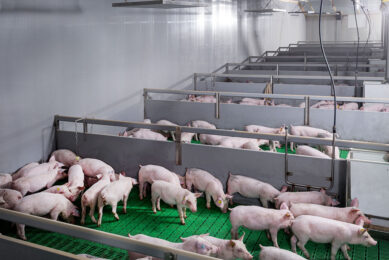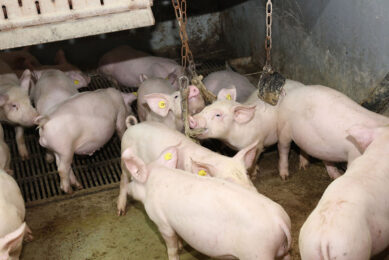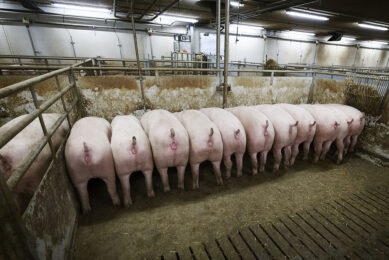More lessons about implantation in sows

Last month, our pig management expert turned to a highly important but underestimated topic: implantation of fertilised eggs in the sows’ womb. How to improve this process to ensure a better outcome of gestation?
I have a series of thick files on sow and gilt management. Leafing through these there are pages and pages of articles, research papers and textbook advice on everything but the subject of implantation. What I found written about it could hardly cover the back of two envelopes. Extraordinary!
As I made clear in part I, satisfactory embedding of the fertilised ovum on to the source of its onward development in the womb affects litter size, litter evenness, birthweights, born alives and even on into post-weaning vigour and progress. That list alone merits far more attention to the subject than I can cover here.
Missed the 1st episode? There, John Gadd discussed the definition of implantation
So what hampers maximal implantation?
Many things, which I will cover in part III, but by far the most important is stress. The physiological reasons are complex but the creation of negative hormones must play a part in disturbing the female’s delicate endocrine balance at this critical stage in the establishment and well-being of its future family.
The ‘feel good factor’
A term I invented decades ago. Worry and anxiety rocks the implantation boat, as does the opposite, over-excitement. So one tip is to keep the sound and smell of boars away from the newly-mated sow and gilt. She has had enough of sexual stimulation and her body and brain must crave, even if she doesn’t fully realise it, peace and quiet. Rest – blessed rest! After all that sex and excitement, the trauma of giving birth, then the effort of supporting a litter, finally the stress of it being taken away, she needs rest from all this recent turmoil. This is especially true of gilts where everything is new for the first time.
Two possibilities
There are two theories which influence the receptivity of the womb surface.
Cause 1: Delayed receptivity
Stress and a host of other factors inhibit the smooth transfer of the endometrial surface from its ‘suckling state’ into its ‘breeding state’, see also Figure 1.
Figure 1 – Uterine conditions may affect birthweights.

Some areas are late into becoming receptive to the filamentous blastocysts looking for a place to attach themselves. Unable to find one, they are sloughed off and die resulting in fewer numbers born.
Cause 2: Asynchronous release
Synchrony is when events happen at the same, or within a very short, time. So asynchrony means staggered or sporadic. If the filamentous blastocysts ‘looking for a home’ arrive in a delayed fashion, then the first arrivals secure plenty of space to get established on the road to becoming an embryo, while those arriving later can only attach themselves to what nutrient space is left and tend to ‘clump’ with other late arrivals (Figure 2).
Figure 2 – The latest proposition.

They may survive but are penalised and emerge as smaller live-borns. (That is how runts are formed.) And of course the litters contain uneven birthweights which increases scrapping at weaning.
So what causes delayed receptivity and asynchronous release? I describe the management errors to avoid next time.











